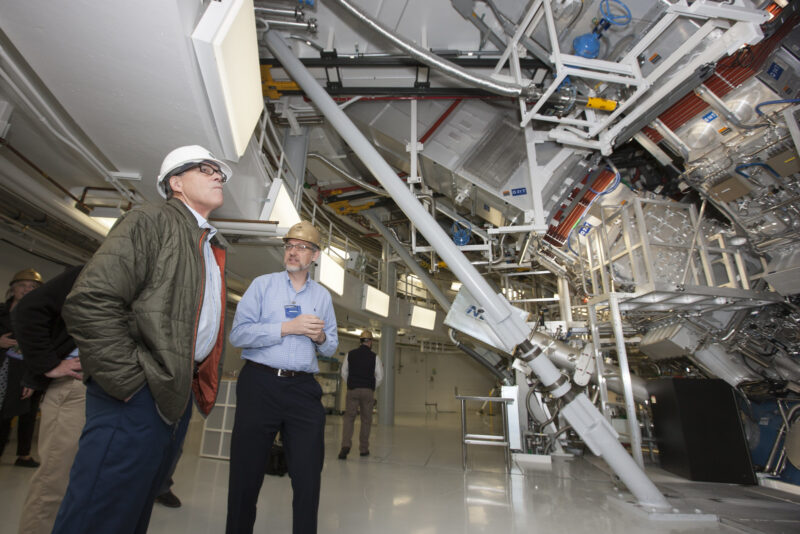
U.S. scientists have achieved “ignition” — a fusion reaction that produced more energy than it took to create — a critical milestone for nuclear fusion and a step forward in the pursuit of a nearly limitless source of clean energy, Energy Department officials said.
First-ever experiment with nuclear fusion
A team of researchers from MIT and Harvard University has conducted the first-ever experiment with contained nuclear fusion that generated an energy gain. A method called inertial confinement fusion was used. A pellet of hydrogen plasma was bombarded by the world’s biggest laser to achieve nuclear fusion. Observers rushed to hail the enormous environmental benefits of applying the technology commercially. However, climate scientists are mostly of the opinion that any claim of producing more energy than was input are wildly optimistic.
This reaction had the energy of half a chocolate biscuit, but it could change the game for nuclear fusion.
What’s the difference between nuclear fusion and nuclear fission?
Nuclear fusion is when two light atomic nuclei combine to form a single heavier one and release massive amounts of energy. Fusion is a process that converts mass into energy. Nuclear fission is the process by which the atom splits in two, releasing energy in the form of a chain reaction. Fusion is the opposite of fission.
Will fusion energy power our homes soon?
The experiment in Lawrence Livermore National Laboratory actually used 100 times more energy than it produced and the day when nuclear fusion power plants will be able to provide clean energy for our homes is far off, if it ever comes.
The single most important technological drawback is the fact that the experiment did not create more energy than it used.
However, this new breakthrough is hoped to lead to a clean, sustainable source of energy.
How long will it be before nuclear fusion can produce usable energy?

The national ignition facility program has been working for decades to find a way to use nuclear fusion to produce usable energy. Scientists have been working hard to develop the technology and build the national ignition facility, but so far it is still in the experimental stages. It may take years before a stable and efficient method for nuclear fusion can be developed that can provide usable energy. While scientists are making progress, it could still be many more years before we see any real-world applications of this technology. It is clear that this project will take a lot of time and effort before it produces any tangible results. The hope is that someday soon, nuclear fusion will provide us with a clean and renewable source of energy.
Work with us for a sustainable future
Take action now! Calculate your carbon footprint using our Carbon Offset Calculator.
Photo credit: Lawrence Livermore National Laboratory (LLNL)


